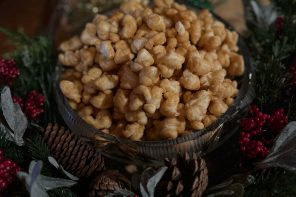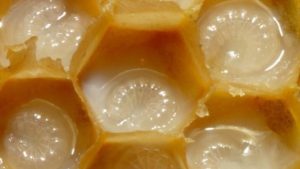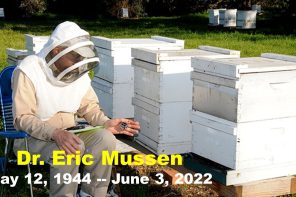By: Becky Masterman & Bridget Mendel
We’re obsessed with clover. Because clover fixes a lot of things, including nitrogen. And before we go a second further, let’s address the element in the room: what is nitrogen, why is everyone always talking about it, and why does it need to be fixed?
Nitrogen is a super abundant gas. (Sorry, we lack advanced degrees in chemistry so are going to leave it at that, after which things get metaphysical). But we can say for sure that nitrogen is everywhere. More specifically, it makes up about 78% of the earth’s atmosphere. For plants, nitrogen is totally essential. It’s key for plants to make proteins! It’s key for plants to make chlorophyll which they need for their life-affirming hobby, photosynthesis!
Sadly, plants can’t just grab nitrogen out of thin air. To make a very complex process (that you should google) simple, ambient nitrogen needs to be “fixed” into chemical forms that are useful to plants. Farmers may add fertilizers, composts or manures to their soils to get nitrogen into the soil in a way that’s palatable to plants.
But pulses and beans and rhizomatic roots! The legumes we fondly call La Familia de Frijoles have the ability to fix nitrogen in soils (though actually it’s certain bacteria with which legumes have a symbiotic relationship that do the fixing. Big shout out to biology for making everything complicated).
So, nitrogen fixation is super important for all plants and the farmers that grow them. And for growers, planting pulses as cover crops or between rows provides a few other fixes: legumes can help retain moisture in the soil, reduce runoff and erosion, compete with weeds, and provide nutrition for grazing animals should there be any. And now for the biggest fix of all: dinner for bees. In fact, the word “clover” is probably connected to the Germanic word “klaiwaz,” meaning “sticky sap,” an ode to the abundant honey made from clover’s sweet blossoms.
There are many plants that share the common name of clover and they all belong to the taxonomic Family Fabaceae (everything from those lucky four-leafers you looked for at recess having not been picked for any kickball teams, to those green split peas the soup of which had to eat before you left the dinner table). True clovers are in the genus Trifolium, which includes species native and non-native to North America (Taylor 1990). Some of the native clovers, (T. trichocalyx and T. anoemum) are listed on the Federal Endangered Species List as their associated indigenous landscapes are disappearing (https://ecos.fws.gov/ecp/report/species-listings-by-tax-group?statusCategory=Listed&groupName=All%20Plants).
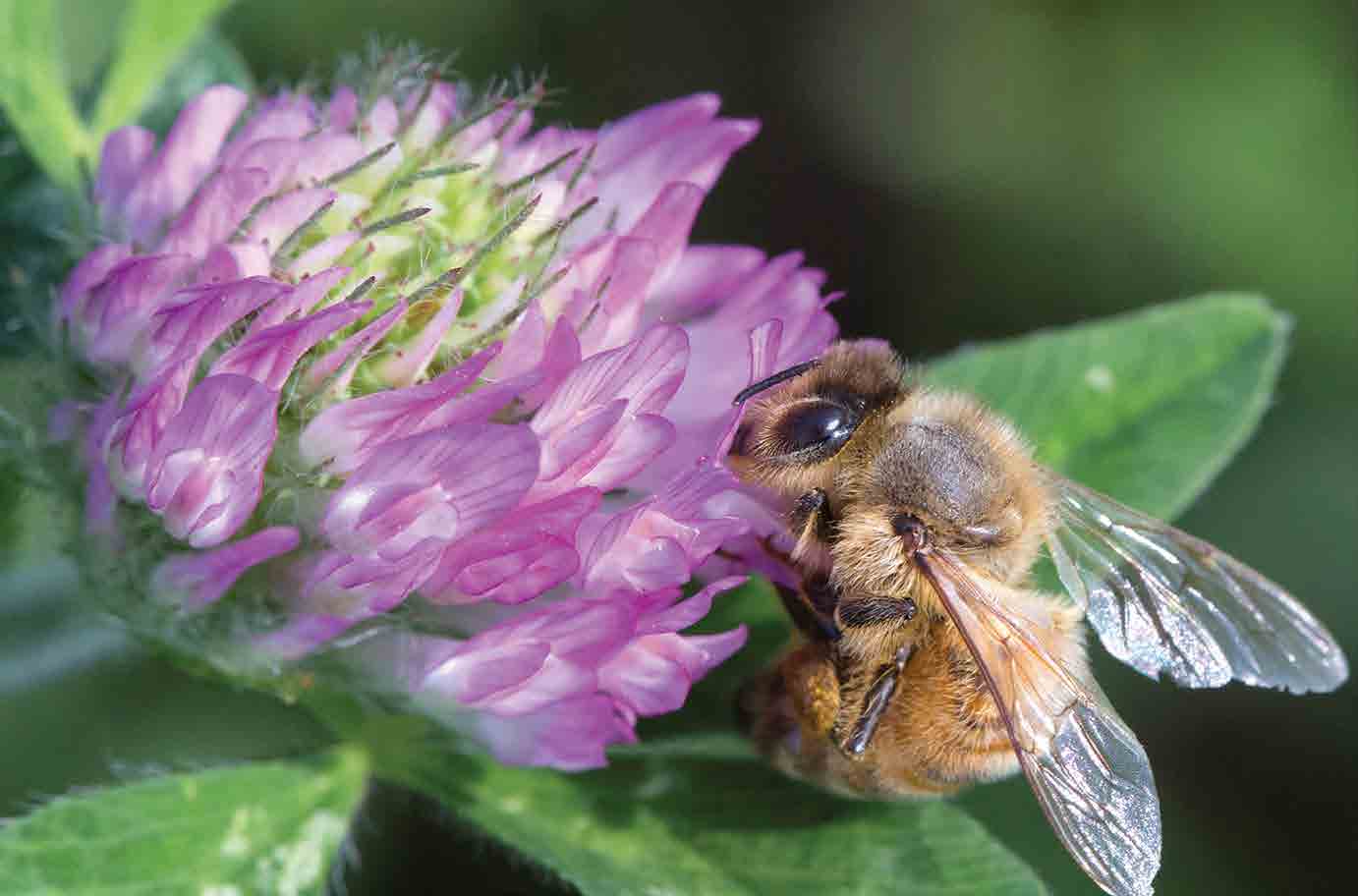
Honey bee foraging for pollen at a red clover (Trifolium pratense).
Photo credit: Judy Griesedieck Photography
As you would expect, the clover plants from which honey bees gather the most nectar and pollen fall into the non-native Trifolium clovers (shoutout to roving humans for making everything complicated!). The true clovers on every honey bees’ Top five include Dutch white clover (T. repens), Alsike clover (T. hybridum), crimson clover (T. incarnatum), and red clover (T. pratense). These clovers are used as cover crops for soil health, and bees appreciate it. Also beloved is Kura clover (T. ambiguum), a rhizome rooted plant that is used as an agricultural living mulch, forage, hay and nectar source with some plots surviving over 20 years.
Another genus in the Fabaceae Family that we call clover is Melilotus (you can practically hear the honey dripping off the name), home to the yellow (M. officinalis) and white (M. alba) sweet clovers both of which have been identified as potential threats to native plant communities (Van Riper et al. 2009). Conservationists are rightly concerned that these tall (reaching five feet), sweet clovers block sun from shorter native plants and increase soil nitrogen to unfavorable levels for natives. Planting sweet clover specifically for our bees is a great idea if we have the land and a management plan, but sincere care must be taken to keep sweet clovers well away from conservation efforts, and to manage their spread.
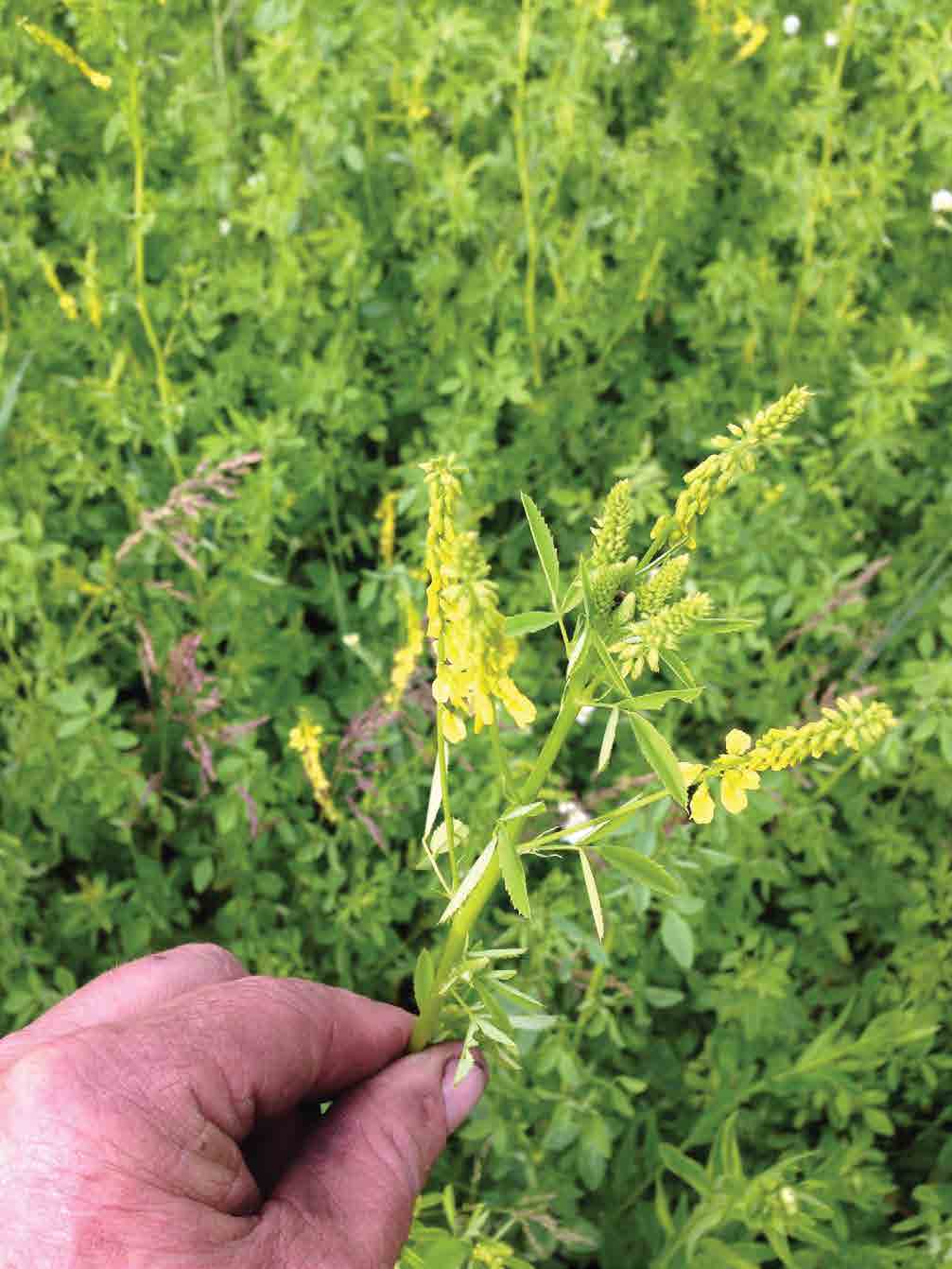
A new plot of yellow sweet clover, Melilotus officinalis. While bees find this flower as an excellent source of nectar, it is also of great concern to many who worry about its invasive tendencies. Ask your local experts if this plant is right for your plot. Photo credit: Keith Johnson
What can we say? One gal’s weed is another gal’s best honey crop. A University of Maryland study asking about the value of native and non-native plants in pollinator plots with seed mixes included sweet clover and three Trifolium species in their seed mixes and demonstrated that clover plants were visited frequently by a diverse group of bees during their expansive flowering seasons. Despite the value of the non-native plants for bees, the authors warn of the potential for these plants to disrupt native bee and plant communities (Seitz et al. 2020).
While clovers can seem like a triple win benefiting everyone from soil microbes to bees to bovines, it’s… complicated… to get it right. “Bloom and let bloom” may be our collective motto, but clover planted under or near crops that get sprayed (like vineyards or fruit trees) is best mown before the spray, even if blooming, so bees aren’t tempted to forage there (McDougall et al. 2021). As beekeepers, it’s essential to talk to the mowers that be about letting their intentional and unintentional clovers bloom, knowing that livestock or crop considerations may get priority.
We are totally fixated on clover, and not least because it tends to do well in many contexts and does not require much talent to grow. We also love the intoxicating scent of it, the giddiness of knowing our bees are feasting, filling up supers. So definitely plant some clover this spring, but pledge to manage it well. Here’s to a year of tall hives and big, big jars of honey.






